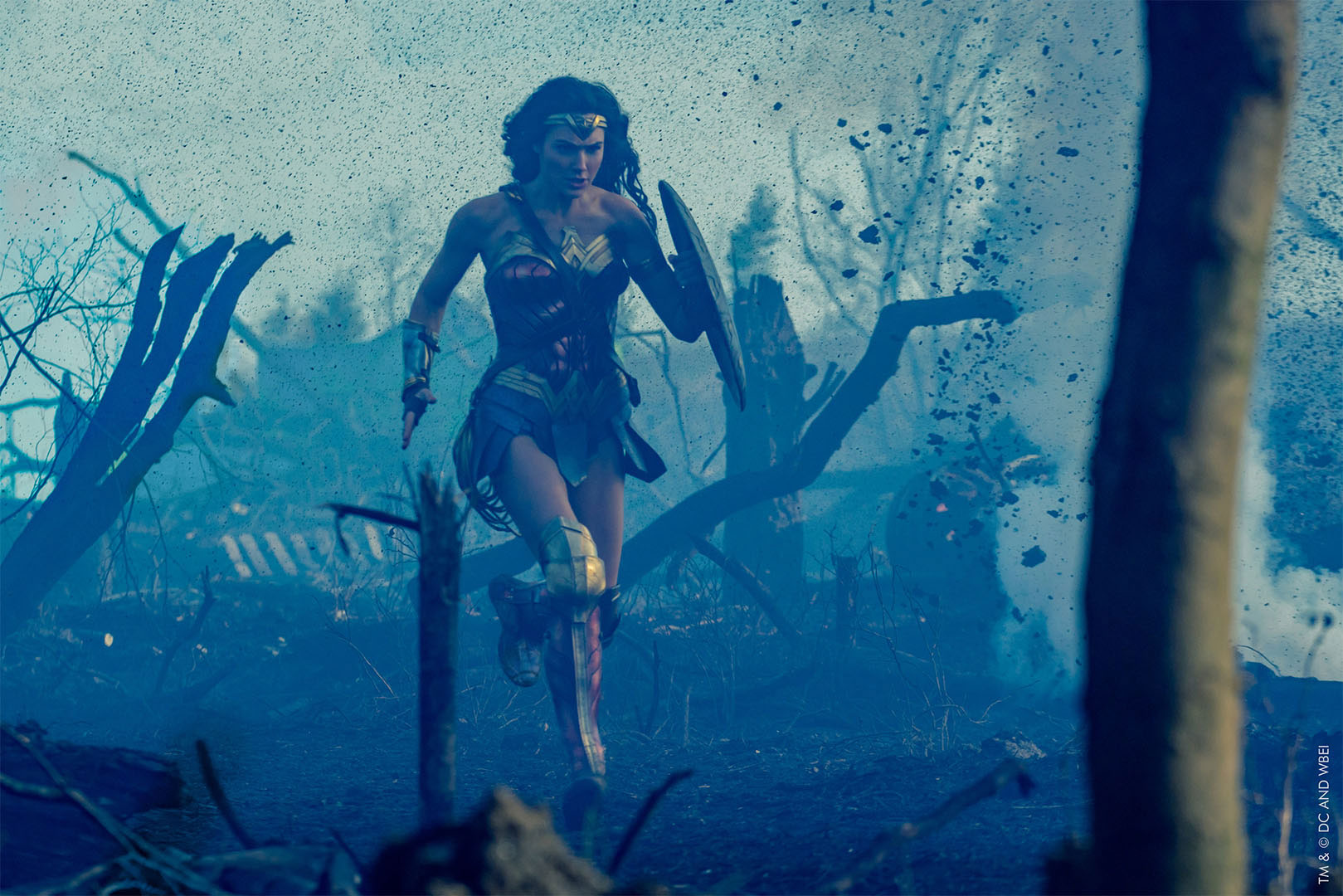★★½
“For flock’s sake…”
 Or, to give this its full, rather misguided name: Birds of Prey (and the Fantabulous Emancipation of One Harley Quinn). I am not convinced that films are improved by giving them gimmick titles including made-up words. It smacks rather of desperation on the part of the makers. Though this is… alright. It did not actively annoy me in quite the same way Captain Marvel did, but it is still disappointing. Robbie’s Harley Quinn was easily the best thing about Suicide Squad. She’s also the best thing about this, but it feels at a considerably lower level. All the edges seem to have been filed off, with Robbie (who produced this and came up with the idea) apparently intent on making her much more of a heroic figure than the barely-restrained psychopath I was hoping to see.
Or, to give this its full, rather misguided name: Birds of Prey (and the Fantabulous Emancipation of One Harley Quinn). I am not convinced that films are improved by giving them gimmick titles including made-up words. It smacks rather of desperation on the part of the makers. Though this is… alright. It did not actively annoy me in quite the same way Captain Marvel did, but it is still disappointing. Robbie’s Harley Quinn was easily the best thing about Suicide Squad. She’s also the best thing about this, but it feels at a considerably lower level. All the edges seem to have been filed off, with Robbie (who produced this and came up with the idea) apparently intent on making her much more of a heroic figure than the barely-restrained psychopath I was hoping to see.
The main problem, however, is over-stuffing of storylines, with so many threads being weaved in, that they all inevitably suffer as a result. Let’s enumerate them. There’s Harley, who breaks up with the Joker, only to discover his protection was the only thing which had been keeping her safe. Detective Renee Montoya (Perez), whose case-load includes investigating crossbow vigilante killings, mob boss Roman Sionis (McGregor) and Harley herself. Sionis’s singer-turned-driver Dinah Lance, a.k.a. Black Canary (Jurnee Smollett-Bell), who… Well, I’m really not sure what purpose she serves here. The crossbow killer is Helena Bertinelli, a.k.a. Huntress (Winstead), seeking vengeance for the death of her family. And Cassandra Cain (Ella Jay Basco), a young pickpocket who steals and eats a diamond containing coded information sought by Sionis.
None of these are adequately developed, even Harley’s. Her story is adequately and brightly sketched out in an animated opening sequence, and then gets scant service as the script tries to keep all its balls, sorry, ovaries in the air. For the feminist leanings are probably the most painful aspect. As depicted here, the “emancipation” of the title seems less about building women up, than tearing men down. Virtually without exception, every male character is more or less a bastard, from the obvious ones like Sionis’s sidekick with a fondness for face-peeling through to Montoya’s former partner who stole credit for her work. Even the kindly store-owner turns out to be happy to sell Harley out. Is this emancipation? To steal from The Princess Bride: “You keep using that word, I do not think it means what you think it means.”
Along those lines I was initially prepared to criticize Margot for pre-release statements, like it being “hugely important to find a female director for this.” However, that snippet is a bit misleading, since the full quote in context goes on, “…if possible. But at the end of the day — male, female — the best director gets the job and Cathy was the best director.” I’m fine with that. Though it has to be said, I’m not sure what made Yan the best, given her only feature before this was Dead Pigs, a comedy-drama about an incident where 16,000 deceased porcines were found in a Chinese river. But the direction here is serviceable enough: it doesn’t get in the way of Margot Robbie, which may be what the star wanted all along.
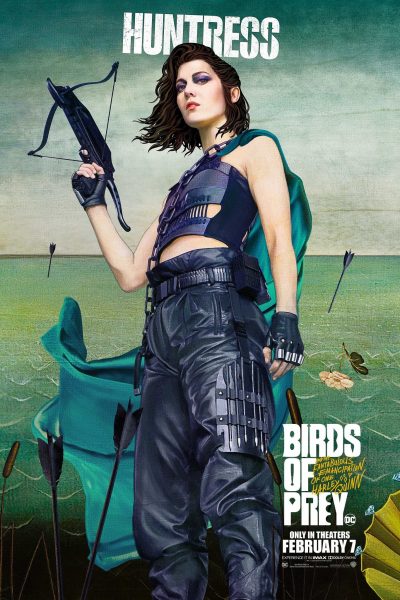 The action is a bit of a mixed bag. There are a couple of very good brawls for Harley, most notably one in a police evidence warehouse (even if the cops seem curiously unwilling to draw and use their firearms. What is this, the United Kingdom?) where Robbie and her stunt doubles get to showcase some stellar moves. But the final fight has much the same problem as the plot in general. In trying to make sure each of the four fighting leads get their chance to shine (Cassandra basically cowers in a corner for the duration of it), the climax basically succeeds in selling all of them short. There is quite a nice “funhouse” atmosphere there, since it takes place in an abandoned amusement park, though it feels like some of the potential wasn’t fully developed.
The action is a bit of a mixed bag. There are a couple of very good brawls for Harley, most notably one in a police evidence warehouse (even if the cops seem curiously unwilling to draw and use their firearms. What is this, the United Kingdom?) where Robbie and her stunt doubles get to showcase some stellar moves. But the final fight has much the same problem as the plot in general. In trying to make sure each of the four fighting leads get their chance to shine (Cassandra basically cowers in a corner for the duration of it), the climax basically succeeds in selling all of them short. There is quite a nice “funhouse” atmosphere there, since it takes place in an abandoned amusement park, though it feels like some of the potential wasn’t fully developed.
It does seem to draw some inspiration from Leon, in the relationship between Harley and Cassandra, which is not dissimilar to the one between Leon and Matilda. In both, the adult is forced to tap into a previously unknown nurturing side after a young girl is dropped into their care, though they are hardly the ideal parent. But probably the most obvious nod is at the end, where Cassandra pulls a very similar “ring trick” to the one which takes care of Stansfield at the end of Leon. As soon as she said it, I figured out what Cassandra meant, before Harley did. However, this maternal element does play into the softening of Harley, one of the disappointing aspects. Given the freedom of an R-rating. I’d have expected a bit more in the way of mature content than a potty mouth and some intermittently brutal violence. At times, it feels more like Robbie is cosplaying Harley, rather than playing her.
Robbie’s avowed aim was to make a “girl gang” pic, perhaps inspired by things like Switchblade Sisters, Faster Pussycat or the pinky violence genre. But what she didn’t bring from them, is that those all had strong leadership. There was no doubt that Tura Satana or Meiko Kaji were the stars: the films accordingly orbited around them and their fabulous screen presence. Her previous movies have shown us, Robbie can deliver that, which makes it all the more of a shame that she abdicated the throne here. Sadly, this ends up closer to an episode from the last series of Doctor Who, with its “very flat team structure.” Or to borrow from Monty Python and the Holy Grail, an anarcho-syndicalist commune where Harley and her pals take it in turns to act as a sort of executive officer for the week. Maybe the title, with its supposed heroine relegated to the tenth and eleventh words, was accurate after all.
Dir: Cathy Yan
Star: Margot Robbie, Ewan McGregor, Mary Elizabeth Winstead, Rosie Perez





























 It’s always nice when a film manages to surpass expectations. Coming in, I was thinking this was going to be nothing but a low-rent, dubbed, caped crusader flick. And, to be honest, that is exactly what it is: a low-rent dubbed, caped crusader flick. But it proved considerably more entertaining than, say, Terminator: Dark Fate, which I saw the same weekend, and which cost roughly a thousand times as much to make.
It’s always nice when a film manages to surpass expectations. Coming in, I was thinking this was going to be nothing but a low-rent, dubbed, caped crusader flick. And, to be honest, that is exactly what it is: a low-rent dubbed, caped crusader flick. But it proved considerably more entertaining than, say, Terminator: Dark Fate, which I saw the same weekend, and which cost roughly a thousand times as much to make. I had a couple of potential concerns going into this. Firstly, my general unfamiliarity with the Marvel Cinematic Universe. This was film #21 in their Infinity Saga. I had seen seven. Would this be like trying to follow Game of Thrones‘s penultimate episode, after having missed two-thirds of what preceded it? Secondly, Brie Larson’s press complaints about movie critics being “overwhelmingly white male.” Yep, guilty as charged, m’lord. Would this questionable attitude – that your skin colour and genital configuration matter more than what you do or say – carry over into the movie?
I had a couple of potential concerns going into this. Firstly, my general unfamiliarity with the Marvel Cinematic Universe. This was film #21 in their Infinity Saga. I had seen seven. Would this be like trying to follow Game of Thrones‘s penultimate episode, after having missed two-thirds of what preceded it? Secondly, Brie Larson’s press complaints about movie critics being “overwhelmingly white male.” Yep, guilty as charged, m’lord. Would this questionable attitude – that your skin colour and genital configuration matter more than what you do or say – carry over into the movie?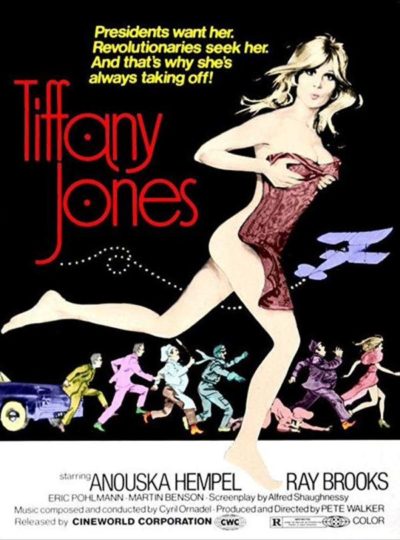 Fashion model Tiffany Jones (Hempel) finds herself dropped into the middle of international intrigue, after President Boris Jabal (Pohlmann), leader of the Eastern European state of Zirdana, takes a shine to her during a state visit to Britain. It’s supposed to be a trade negotiation, but is really to allow Jabal to broken an arms deal with some shady Americans. Her meeting the President brings her to the attention of two factions of Zirdanian rebels.
Fashion model Tiffany Jones (Hempel) finds herself dropped into the middle of international intrigue, after President Boris Jabal (Pohlmann), leader of the Eastern European state of Zirdana, takes a shine to her during a state visit to Britain. It’s supposed to be a trade negotiation, but is really to allow Jabal to broken an arms deal with some shady Americans. Her meeting the President brings her to the attention of two factions of Zirdanian rebels.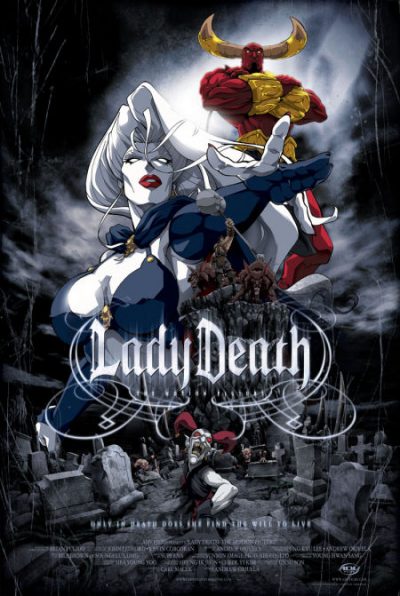 My first viewing of this was on a day off from work, when I was down with some sinusy thing, and dosed up on DayQuil. So I chalked my losing interest and drifting off to the meds, and once I felt better, decided this deserved the chance of a re-view. However, the result was still the same: even as a bright-eyed and bushy-tailed viewer, I found attention lapsing. For this animated version of a mature comic, might as well be a He-Man and the Masters of the Universe episode. Which is a shame. I wanted to like it, since the creator of Lady Death, Brian Pulido, is something of a local comics legend here in my adopted home state of Arizona. This should have been better.
My first viewing of this was on a day off from work, when I was down with some sinusy thing, and dosed up on DayQuil. So I chalked my losing interest and drifting off to the meds, and once I felt better, decided this deserved the chance of a re-view. However, the result was still the same: even as a bright-eyed and bushy-tailed viewer, I found attention lapsing. For this animated version of a mature comic, might as well be a He-Man and the Masters of the Universe episode. Which is a shame. I wanted to like it, since the creator of Lady Death, Brian Pulido, is something of a local comics legend here in my adopted home state of Arizona. This should have been better.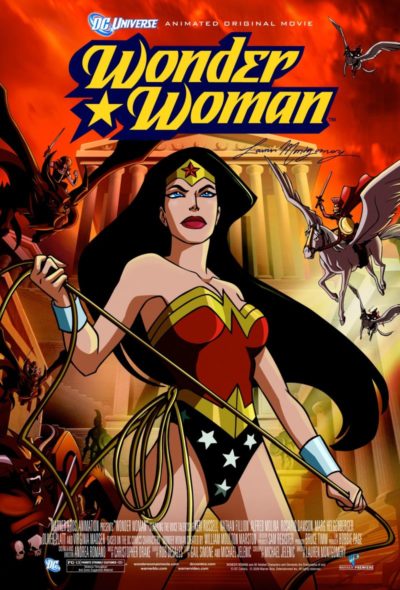 Often forgotten in the critical acclaim for the
Often forgotten in the critical acclaim for the 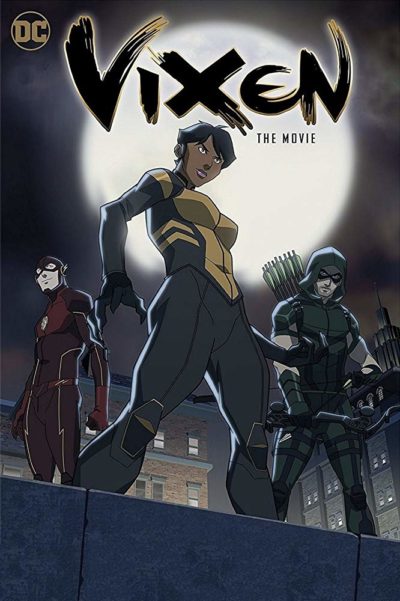 Having dipped my toe into the animated DC World with their 2009 version of
Having dipped my toe into the animated DC World with their 2009 version of  There have been two (or perhaps three) subsequent comic-book incarnations. First was Battle Angel Alita: Last Order, originally published from 2001-14 in Japan. Then came Battle Angel Alita: Holy Night and Other Stories, though this was a collection of four side-stories – hence the “perhaps three”! Most recently, we had Battle Angel Alita: Mars Chronicle (2015-17). Two of the volumes from the first incarnation were adapted into a pair of 30-minute OVAs (Original Video Animation), released in June 1993. Rumblings of a live-action version have been around almost as long, with James Cameron securing the rights to the comic in 1999, having been introduced to the property by Guillermo Del Toro. By the mid-2000’s, a script had been created, but after developing the project in parallel with Avatar, Cameron decided to devote his efforts to that instead, and Alita went on the back-burner.
There have been two (or perhaps three) subsequent comic-book incarnations. First was Battle Angel Alita: Last Order, originally published from 2001-14 in Japan. Then came Battle Angel Alita: Holy Night and Other Stories, though this was a collection of four side-stories – hence the “perhaps three”! Most recently, we had Battle Angel Alita: Mars Chronicle (2015-17). Two of the volumes from the first incarnation were adapted into a pair of 30-minute OVAs (Original Video Animation), released in June 1993. Rumblings of a live-action version have been around almost as long, with James Cameron securing the rights to the comic in 1999, having been introduced to the property by Guillermo Del Toro. By the mid-2000’s, a script had been created, but after developing the project in parallel with Avatar, Cameron decided to devote his efforts to that instead, and Alita went on the back-burner.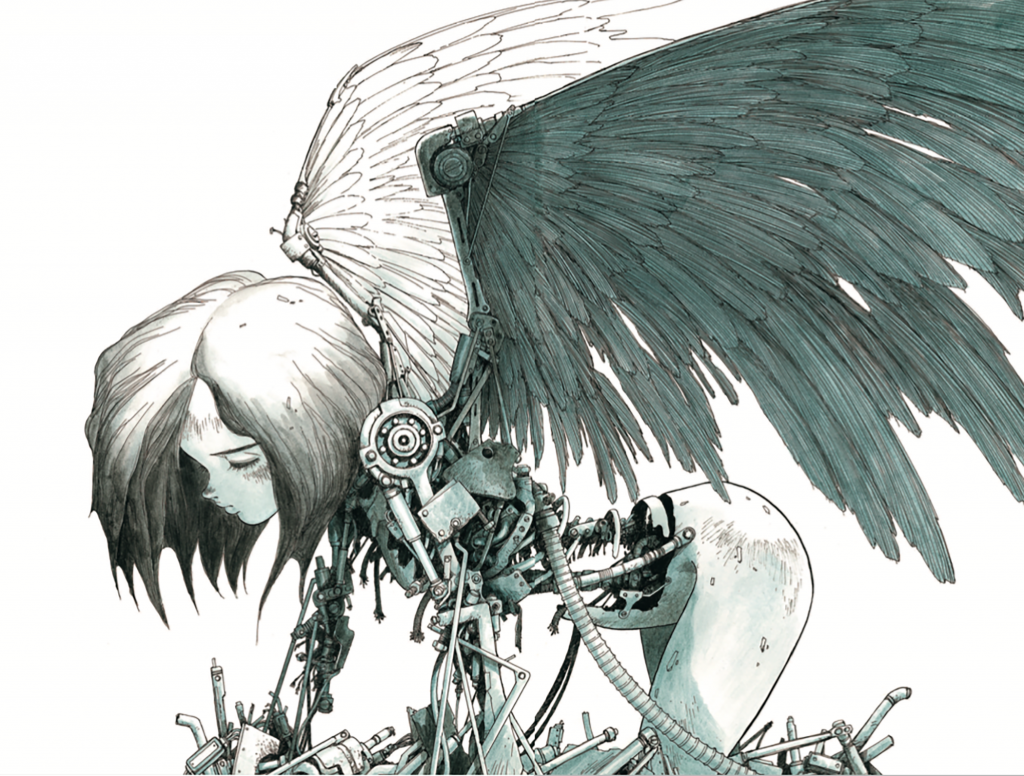
 I used to read a
I used to read a 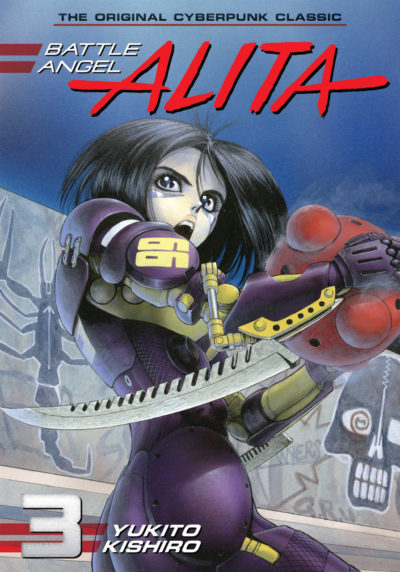 wever, there’s still an amazing amount going on in terms of story-line and universe-building. You can easily see how the feature film will only be able to cover perhaps one-quarter of the series. I presume it will begin with the origin story, in which Ido finds the head of Alita in the scrapyard beneath the floating city of Tiphares, and gives it a cybernetic body. He’s a part-time bounty hunter, only to find out quickly, the combat abilities of his new charge far surpass his own. Unfortunately, she has little or no memory of her prior life; where she got these skills and how she ended up in the scrapyard is only revealed well into the series.
wever, there’s still an amazing amount going on in terms of story-line and universe-building. You can easily see how the feature film will only be able to cover perhaps one-quarter of the series. I presume it will begin with the origin story, in which Ido finds the head of Alita in the scrapyard beneath the floating city of Tiphares, and gives it a cybernetic body. He’s a part-time bounty hunter, only to find out quickly, the combat abilities of his new charge far surpass his own. Unfortunately, she has little or no memory of her prior life; where she got these skills and how she ended up in the scrapyard is only revealed well into the series.








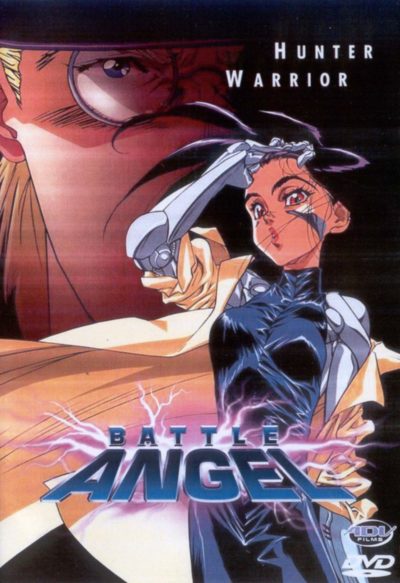 Watching this after having read the manga version, it feels like the anime version can do little more than scratch the surface of the world of Tiphares, in the barely fifty minutes it has to work with across its two OVA (Original Video Animation) volumes. The stories here, originally released in 1993, cover the first two section of the manga, and it looks like much of what we see here will also be included in the live-action film next February. Slightly confusing matters, is the way this uses the original Japanese names. So Tiphares becomes Zalem here, and Hugo is Yugo. Most oddly, the heroine is not called Alita – hence the absence of her name from the title – but Gally. To avoid further confusion, I’m going to be consistent with our other articles on the topic, and stick to the translated ones for what follows.
Watching this after having read the manga version, it feels like the anime version can do little more than scratch the surface of the world of Tiphares, in the barely fifty minutes it has to work with across its two OVA (Original Video Animation) volumes. The stories here, originally released in 1993, cover the first two section of the manga, and it looks like much of what we see here will also be included in the live-action film next February. Slightly confusing matters, is the way this uses the original Japanese names. So Tiphares becomes Zalem here, and Hugo is Yugo. Most oddly, the heroine is not called Alita – hence the absence of her name from the title – but Gally. To avoid further confusion, I’m going to be consistent with our other articles on the topic, and stick to the translated ones for what follows. ★★★★
★★★★